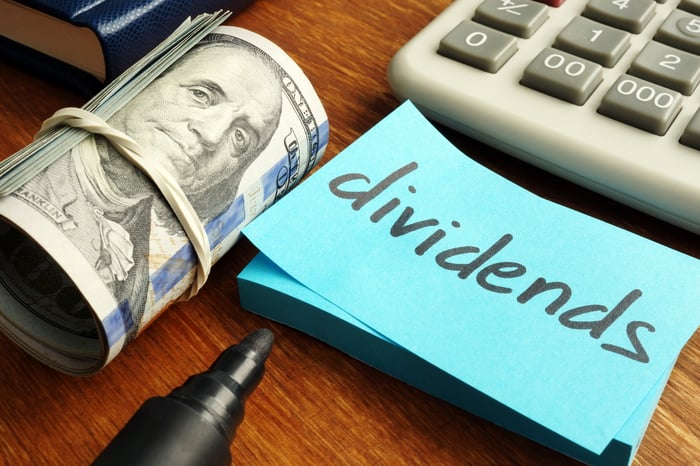Bank of Nova Scotia (BNS 0.71%), also known as Scotiabank, has a 6.4% dividend yield. That's more than 3 percentage points higher than the average bank stock, using S&P Bank ETF as an industry proxy. There are some reasons for the higher yield, but management is confident that the dividend is safe. Here's why you might want to add this Canadian banking giant to your portfolio.
Scotiabank has a strong foundation
The core of Scotiabank's business is its Canadian operations. Canada's banking industry is highly regulated, with a handful of giants effectively insulated from competition. Scotiabank is among that elite group, so there's a solid business foundation here. That said, Canada's banking system also tends to be fairly conservative because of all that regulation, a fact that's reflected throughout Scotiabank's operations.

Image source: Getty Images.
That, however, is where an interesting twist comes into play. Most of Scotiabank's main rivals in Canada have expanded into the U.S. market in pursuit of growth. It makes sense given the proximity of the two countries. While Scotiabank has some U.S. exposure, it has gone even further south as it looks for growth, with operations in Central America, South America, and the Caribbean. This provides the bank with a more open playing field than if it tied its long-term expansion to just the highly competitive U.S. market.
That said, as management looks to 2024 and beyond, it is refocusing around priority businesses. That includes Canada, Mexico, and the U.S. as it looks to tap into the trade growth across the North American region. The company estimates that it has 42,000 Canadian and Mexican clients with U.S. operations. In other words, having sizable exposure to Canada and Mexico is augmented by the bank's U.S. position.
At the same time, Scotiabank has been looking to improve its financial core. Examples here include strengthening the Tier 1 Capital Ratio, which rose from 11.5% at the end of 2022 to 13% at the end of 2023. The Tier 1 ratio is a measure of a bank's ability to deal with adversity, with higher numbers being better than lower ones. It is also increasing the company's deposit base (essentially its own customers), with a reduction in wholesale funding (which comes from non-bank customers) from 21.6% at the end of 2022 to 20.6% at the end of 2023. Basically, management laid out a plan and it is slowly starting to execute on that strategy.
Scotiabank's dividend is fine
Part of the reason for Scotiabank's high yield is that it has ventured further south than many of its peers. There is, indeed, more risk in this decision. But another factor is that the bank has lagged its peers on a number of industry metrics, like earnings and revenue growth. Investors reacted by favoring the stocks of banking peers.
BNS Dividend Yield data by YCharts
If Scotiabank weren't successfully working toward improving its operations, it might be best avoided. However, as noted, that's just not the case. Management has provided broad goals and lived up to them. This isn't an overnight effort, but slow and steady progress is good enough given that investors are being paid well to stick around via an industry-leading dividend yield.
And yet there's an issue to consider. The company's dividend payout ratio target range is between 40% and 50%, but it is currently above 60%. When asked directly about this, management noted it was aware of the fact and that it was not a significant problem. The big takeaway is that, while it might take a few years to get back within that range, the dividend isn't at risk.
If you don't mind a little wait
All told, Scotiabank has a differentiated business model. While it has lagged recently, it is taking steps to improve performance that are already starting to show results. And while Wall Street may be concerned about the business and dividend, leaving the stock with a lofty yield, the bank itself isn't worried about being able to support the payment. If you think in decades and not days, you might want to add Scotiabank to your portfolio while Wall Street is still downbeat on the stock.






